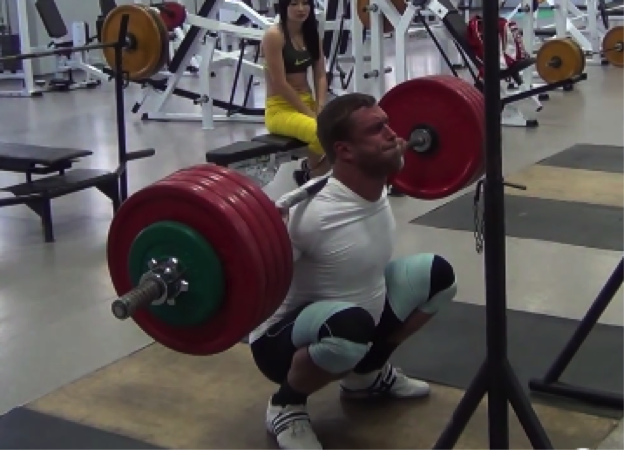The Half Squat is DEAD
/Time to beat a dead horse. Half-squats are bad. If you are serious about training, your squats should be breaking parallel every time . It's a matter of efficiency and even safety. I'm not assaulting your character if you lack the mobility required for the hips to reach necessary depth, but if you aren't taking the steps to improve that mobility then you're probably not invited to my birthday party (it's okay, no one shows up anyway).
There are three primary lifts within Volt programming and there's a reason the half squat isn't one of them.
Klokov hits depth...with 542 lbs...for a 5 second pause...
Squat deep or go home
Getting the hips below the knees is the what makes a squat a squat. Proper depth allows the glutes and hamstrings to stretch under tension while the torso remains upright and strong. This promotes not only safe spine and hip positions under load, but also allows the entire lower body to produce as much force as possible. Hitting depth with proper speed and control enables an athlete to utilize a stretch reflex from the posterior chain to drive out from the bottom. This reflex is called the "stretch-shortening cycle" (SSC). As the muscle fibers contract to drive out of the squat, they are aided by the elastic properties of the surrounding tissue structures.
The SSC helps propel the athlete upward with more SPEED and more FORCE. Developing not only the strength, but also the neural recruitment required to spring out of a deep squat helps to build a more powerful athlete. But half-squats fail to promote the same power as full squats, and they fall short in development stable positioning and activating the posterior chain. And what does an underdeveloped posterior chain give you? Weak glutes and hamstrings, which are prime indicators of injury risk in athletic competition. So do yourself a favor and develop some iron glutes by hitting depth on your squats, OK?
Why are half-squats so common?
1. Ignorance.
Most people are just uninformed about squatting and unknowingly don't reach necessary depth. This may be a reasonable excuse for the Average Joe at Gold's, but if you're an athlete, you need to be squatting properly. But is this the fault of the athlete?? Don't think so. Ultimately, coaches, strength coaches, PE teachers, parents, and anyone else responsible for the athlete's training needs to step up to the plate and teach proper squatting technique.
This picture needs more Klokov.
2. Ego-Inflation.
This one's not cool, bro. Feeding the ego is the absolute worst reason to half-squat and is the primary reason squats ever got a bad reputation. Putting weight on the bar that you can't actually squat only increases injury risk and leaves an athlete with artificial indications of their actual strength. Either man up and DECREASE the weight on the bar to what you can handle at full range of motion and train to actually get strong, or move to a part of the Siberian tundra where I can't find you.
3. Strategy.
OK, this is the only excusable reason to employ a half-squat. Training specifically to isolate and fatigue the quadriceps (for bodybuilding) or training at specific joint angles for specific load adaptations has its purpose. But here's the deal: At Volt, we don't train bodybuilders and we don't load up half-squats because our athletes don't need that level of joint-angle precision. Unless you are Olympic-caliber, chances are good that you don't need that either. I'm going to take a wild guess and assume that you don't have a team of sport scientists measuring and recording your every move and you're not an advanced enough athlete to require Olympic-level specificity in your programming. So no half-squatting. And if you're a bodybuilder (props to you, by the way - bodybuilding is a tough world), you already know this stuff and you've already stopped reading and have gone back to eating your 15th chicken breast (save me some!).
So what if I can't hit depth due to my mobility issues?
Great question. By asking it, that means you are taking ownership of your training and I want to mail you a protein shake and a fist bump. A great resource for mobility work is Dr. Ryan DeBell's website, The Movement Fix. It offers some great information, tips, and practical approaches to improving your body's mechanics. And they don't just talk about squats either; The Movement Fix has fixes and adjustments that will help with just about every athletic movement. Once you start investing time into improving the way your body moves, the better your strength gains in training will translate to competition. An efficient athlete is a healthy athlete.
Join over 1 Million coaches and athletes using Volt's intelligent training app. For more information, click here.
Learn more about Jace and read his other posts | @VoltCoachJace










